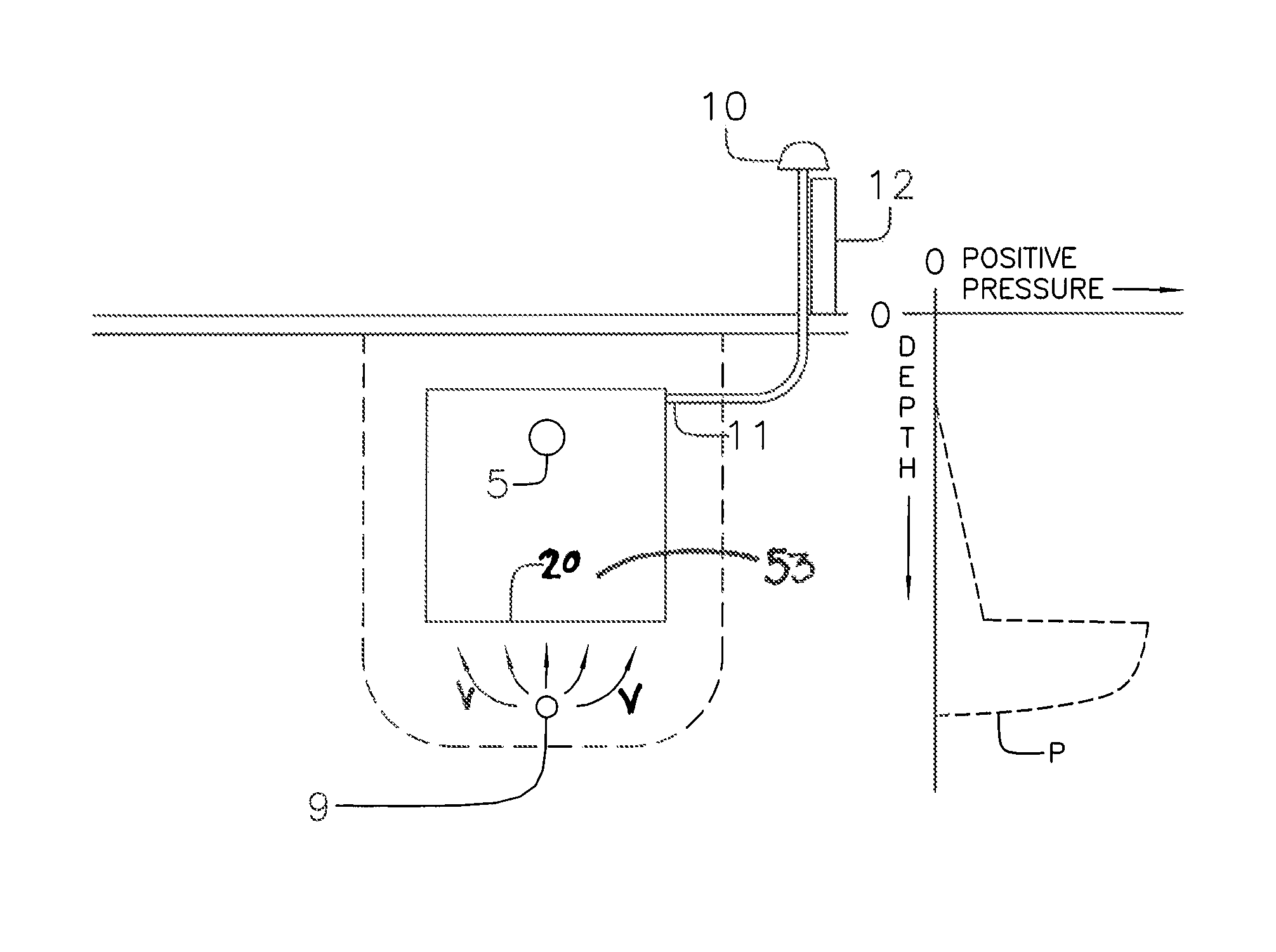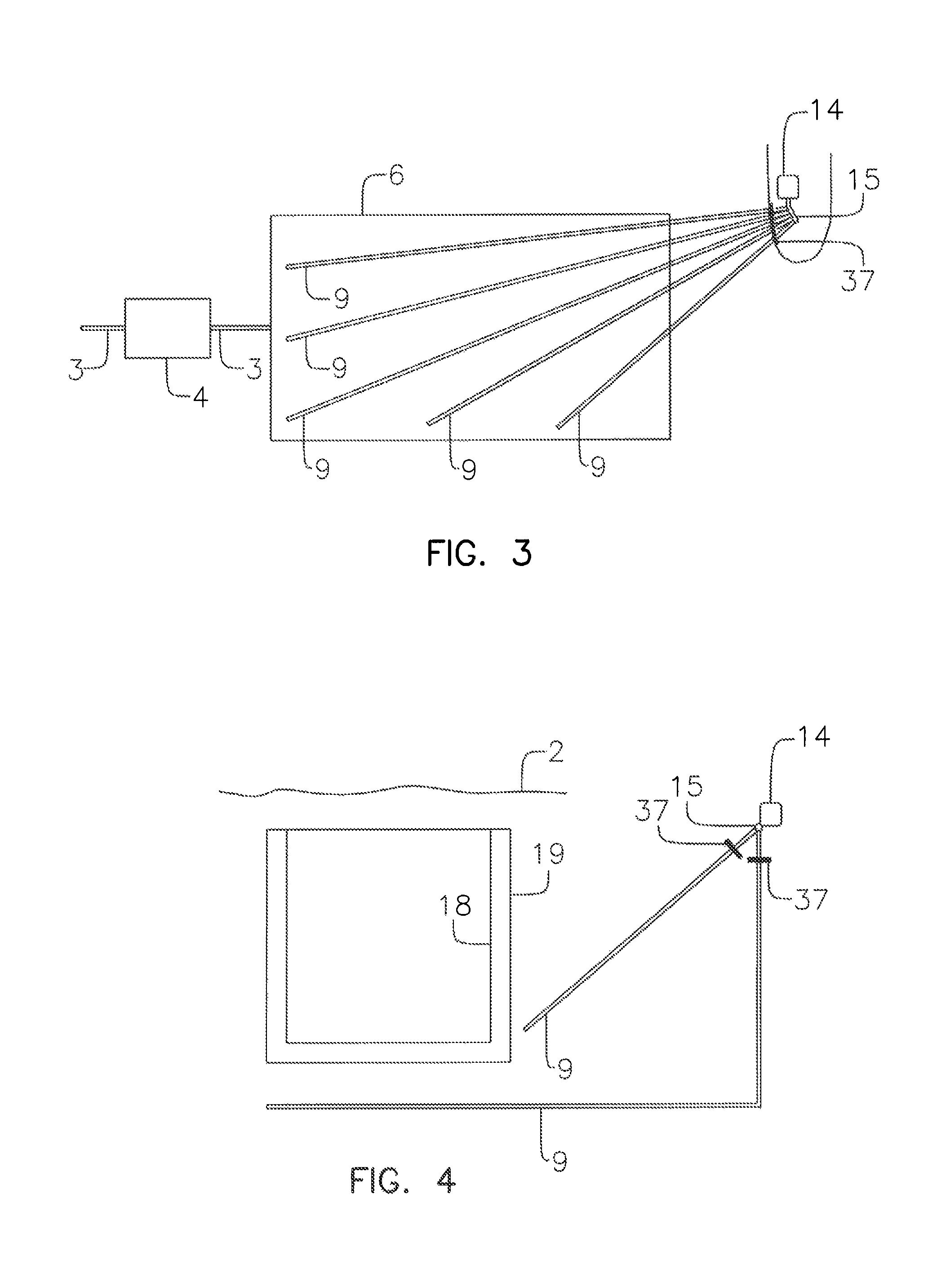Method for enhanced aerobic activity and bio-mat control for onsite wastewater disposal systems
a biomat and aerobic activity technology, applied in biological water/sewage treatment, filtration separation, separation processes, etc., can solve the problems of bio-mat thickening much faster, premature clogging of disposal area with anaerobic sludge, and failure of the disposal area, so as to improve aerobic activity and reduce the effect of clogging and clogging of the disposal area
- Summary
- Abstract
- Description
- Claims
- Application Information
AI Technical Summary
Benefits of technology
Problems solved by technology
Method used
Image
Examples
Embodiment Construction
[0030]FIGS. 1-12 show an aeration system 50 of the present invention for disposal areas.
[0031]FIG. 1 shows septic system with a method for enhanced aerobic activity for a disposal area 6. A disposal area 6 includes, but is not limited to, disposal bed, seepage pit and the like. The septic system includes a source 1 of wastewater connected to connection pipes 3 which are located below ground level 2. The source of wastewater fed to the disposal areas 6 can be from a variety of sources as know in the art. The wastewater includes any known wastewater, such as storm or sewer water as known in the art. The connection pipes 3 connect the source 1 of the wastewater to a primary treatment septic tank and / or aerobic treatment and / or pump tank 4. The connection pipes 3 also connect the tank(s) 4 to wastewater disposal laterals 5 which are perforated lateral pipes or infiltration chambers which allow the wastewater to escape to the disposal area 6. The wastewater disposal laterals 5 can be sur...
PUM
| Property | Measurement | Unit |
|---|---|---|
| Flow rate | aaaaa | aaaaa |
| Diameter | aaaaa | aaaaa |
| Length | aaaaa | aaaaa |
Abstract
Description
Claims
Application Information
 Login to View More
Login to View More - R&D
- Intellectual Property
- Life Sciences
- Materials
- Tech Scout
- Unparalleled Data Quality
- Higher Quality Content
- 60% Fewer Hallucinations
Browse by: Latest US Patents, China's latest patents, Technical Efficacy Thesaurus, Application Domain, Technology Topic, Popular Technical Reports.
© 2025 PatSnap. All rights reserved.Legal|Privacy policy|Modern Slavery Act Transparency Statement|Sitemap|About US| Contact US: help@patsnap.com



